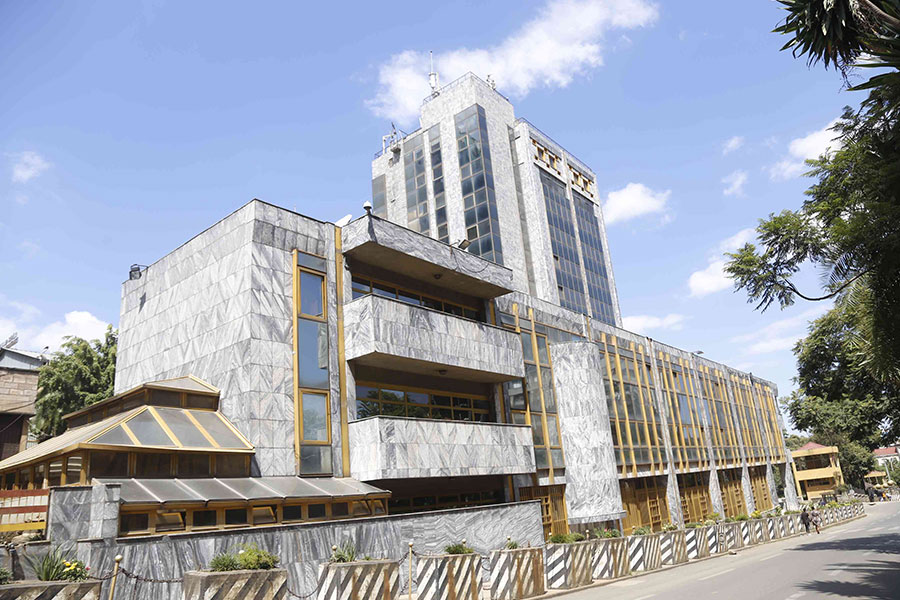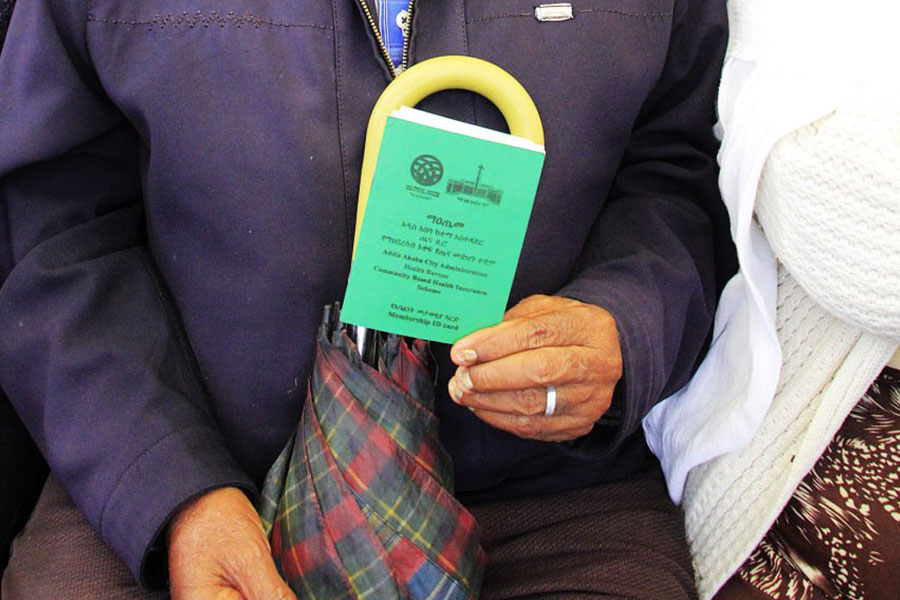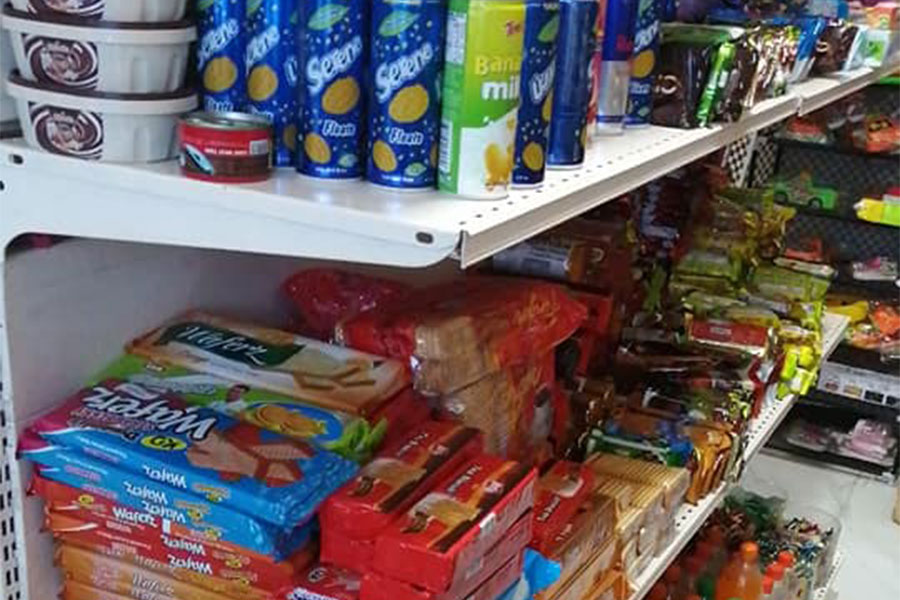
Radar | Jun 01,2024
Aug 6 , 2022.
Few initiatives by the administration of Prime Minister Abiy Ahmed (PhD) have been publicised as aggressively as self-sufficiency in agriculture production. To be precise, it is about scaling up wheat farming. With an ambitious stroke, Minister Umer Hussien and his experts at the Agriculture Ministry intend to boost the crop’s output by 70pc to 107 million quintals. They even aspire to begin exporting 10 million quintals starting next year. Contrast this to the historical trend that the Ethiopian state has been importing 1.7 million tonnes of wheat annually for over a decade.
Many have taken the authorities’ declaration of intent at face value. The African Development Bank (AfDB), which provides heat-resistant wheat varieties to farmers in the continent, has its President, Akinwumi Adesina (PhD), who spoke recently from the pulpit. He repeated his conversation with Ethiopia’s Prime Minister on the purported success of wheat production over the last year.
Few would like to see the initiative fail. But many wonder about its pragmatism.
Agricultural productivity is one of the most elusive development targets. The ambition to see poverty reduced through a broad-based economic development has haunted successive generations since the 1950s. Instead, recurrent droughts leading to a series of famines with dreadful consequences for many have become familiar.
Poor productivity - of agriculture in particular - continues to be the most challenging structural problem in the economy. It contributes to the perennial lack of foreign currency, drives inflationary pressure and has a hand in the conflicts arising from the land tenure regime. In the 21st Century, about a third of children in Ethiopia are stunted, around a quarter of all child deaths occur due to under-nutrition, and less than half eat three times a day, according to United Nations Children’s Fund (UNICEF).
Not many sane people would want to see this continue.
Still, such an acute growth in wheat production appears to be too ambitious to realise. The United States Department of Agriculture’s assessment agrees. Wheat imports would be slightly lower, but it estimates that Ethiopia will have to buy from outside 1.4 million tonnes in 2023, nearly a fifth of total consumption.
The likelihood that the plan could be too high to be achievable within the next year should not be a reason to quit, though. Good work has been done. Harvested land and yield per hectare have grown from cluster farming, crop rotation and disease-resistant wheat varieties. This is commendable. But it will not be enough considering the structural challenges. Conflict and drought have sent the number of food insecure people to a fifth of the population. Food inflation is usually at over 40pc.
A fundamental approach needs to be taken, connecting farmers with the finance they need to increase yields substantially.
Two indicators are salient. The World Bank estimates up to three-fourths of Ethiopia’s farmers to be smallholders, ploughing small parcels of land. Over the decades, as the population has bulged, the average landholding has fallen below a hectare, which is the typical average farm size for low-income countries. Credit to the agriculture sector - the other indicator - is one of the lowest. Last year, outstanding credit to the agricultural sector stood at 31.8 billion Br, a mere 2.5pc of the outstanding credit in the economy.
In a country suffering from persistent food insecurity, the agriculture sector gets credit not much higher than the hospitality industry.
The piece of the puzzle is land ownership. Close to 18 million smallholder farmers populate the agriculture sector. Unfortunately, they do not own the land they live on and plough. The land belongs to “the people”, decrees Ethiopia’s constitution. It has been dispossessed of its value as private property. It cannot become a tradable commodity or even be used as collateral by farmers living on it. Credit, thus, keeps its distance from the agriculture sector.
History played a big part in this. A generation revolted against feudal serfdom that had subjected millions to perpetual poverty. Its members, primarily students and led by those sent out to study in Europe and the United States, rebelled, raising the mantra of “Land to the Tiller”. It was a slogan borrowed from the Taiwanese 1953 law, “Land to the Tiller Act”. The call for land redistribution from absentee landlords was part of a broader demand for progressive change, including acknowledging pluralism and respect for individual rights.
Not surprisingly, land reform was done in a repeat of cataclysmic historical events that happened elsewhere - a revolution. The military junta that had ousted an entrenched monarchy hijacked the revolution from the students. But not without responding to one of their demands in introducing land reform. Sadly, it fell short of granting farmers land ownership, a policy regrettably codified in the constitutions that came about since.
Farmers in Ethiopia are shackled to their land. A commodity most valuable to wealth creation lies under their feet, but they are prohibited from using it to their economic advantage. They can only plough it generation after generation or abandon it altogether. This is while the demand for land in cities moves into speculation territory.
Successive governments tried various schemes to boost agricultural productivity. From collectivisation to villagisation, from wholesale land leases for commercial farming to cluster farming - all were attempts to mimic the benefits that could have accrued to the sector. Even crop insurance schemes or land rentals, modest efforts to commercialise farming, are poor attempts to get finance to flow to the sector. The furthest they travelled was issuing users’ certificates to provide tenure security. Nonetheless, these have proven inadequate, unsustainable, and misguided.
The “land question” - as the revolutionaries used to like framing it - has always been highly politicised and polarising. It is an issue beyond the preferences of a particular political group, constituency or social force.
A significant concern worldwide is that land is finite and a source of human well-being that cannot be left to the excess of private ownership, like water or air. It could be true. It is not possible to produce more land. Unchecked, a few could accumulate land at the expense of the many.
But banning private ownership could not be the only answer. Progressive taxation exists precisely to redistribute wealth in society. It would be acceptable for land privatisation to be followed up with land value taxes. Land can be traded or used as collateral; whoever owns it will have to pay taxes. It is a win-win, including for the state. The opportunity cost of the current land policy is foregone land value tax revenues on millions of hectares of land.
The concern that private land ownership may unlock labour from agriculture without other sectors to absorb the excess could be legitimate. Advocates of public land ownership understandably worry that privatisation could lead to many farmers selling their lands on the penny because they may not be financially literate.
These are arguments missing macro trends in Ethiopia. Population growth has led to increased fragmentation of agricultural land. Average farmland is already under a hectare of area. A generation later, it will no longer be economically viable for many to continue ploughing. Ready or not, labour will move out of the agricultural sector. The exodus of farmers many fear will happen in the aftermath of private land ownership regime can be addressed with hard work and imagination. A law could require first-time sellers to be paid in annuities instead of one-time lump sum payments. Land flipping could be discouraged, doubling taxes on those that re-sell within a few years.
Such safeguards can protect farmers from unscrupulous brokers or businesspeople.
Whatever the policies, however, the land question should be informed by the public’s opinion. It is about time that the constitutional provision banning private ownership of land is put before the public for a plebiscite. There are good arguments to be made for it.
No country without significant reserves of minerals graduated to middle-income status without figuring out how to feed its people. Ethiopia will not be different. Nearly half a century has passed trying out various initiatives but major land reform. Millions still go to bed hungry. It is time to change course and amend the Constitution. Previous generations fought to give “land to the tiller.” This generation ought to call for “finance to the tiller.”
PUBLISHED ON
Aug 06,2022 [ VOL
23 , NO
1162]

Radar | Jun 01,2024

Commentaries | Nov 26,2022

Radar | Mar 25,2023

Fortune News | May 24,2025

Radar | Aug 01,2020

Photo Gallery | 175401 Views | May 06,2019

Photo Gallery | 165621 Views | Apr 26,2019

Photo Gallery | 155956 Views | Oct 06,2021

My Opinion | 136814 Views | Aug 14,2021

Dec 22 , 2024 . By TIZITA SHEWAFERAW
Charged with transforming colossal state-owned enterprises into modern and competitiv...

Aug 18 , 2024 . By AKSAH ITALO
Although predictable Yonas Zerihun's job in the ride-hailing service is not immune to...

Jul 28 , 2024 . By TIZITA SHEWAFERAW
Unhabitual, perhaps too many, Samuel Gebreyohannes, 38, used to occasionally enjoy a couple of beers at breakfast. However, he recently swit...

Jul 13 , 2024 . By AKSAH ITALO
Investors who rely on tractors, trucks, and field vehicles for commuting, transporting commodities, and f...

Oct 18 , 2025 . By NAHOM AYELE
In a sweeping reform that upends nearly a decade of uniform health insurance contribu...

Oct 18 , 2025 . By BEZAWIT HULUAGER
A bill that could transform the nutritional state sits in a limbo, even as the countr...

Oct 18 , 2025 . By SURAFEL MULUGETA
A long-planned directive to curb carbon emissions from fossil-fuel-powered vehicles h...

Oct 18 , 2025 . By BEZAWIT HULUAGER
Transaction advisors working with companies that hold over a quarter of a billion Bir...